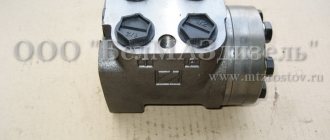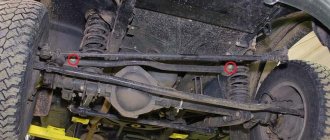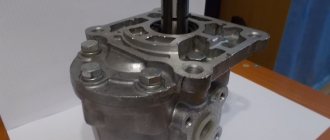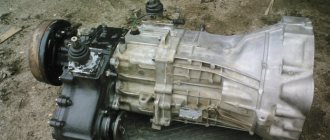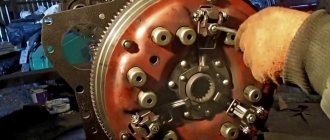What is common between repairing a tractor metering pump and repairing a pumping station?
The MTZ metering pump is a complex device that is an integral component of the entire hydrostatic unit of a tractor machine. The MTZ pump is the main one in the chain “distribution of technical fluid - inflow to the cylinders”. The metering pump is especially effective when the tractor machine is overloaded - it requires less force to move the wheels.
How it works – MTZ dispenser
This component is produced at the tractor plant, which is based in Minsk, Belarus. To create an effective and durable device, the Minsk Specialized Tractor Plant has significantly simplified the technical design of the pump - it is easy to operate, has increased wear resistance and reliable mechanisms. To repair a dispenser pump with your own hands, you first need to understand its structure. So, the MTZ dispenser pump has the following assembly diagram - a technical distribution device, a housing with a group of valves and a special unit that provides swinging. The last component consists of several main components - a stator, small components, a rotor, a spool, which is held by springs, and, directly, the column shaft.
When you start moving, the above-mentioned steering column along with the spool also begins to move - all together they move relative to the main axis of the center and ensure the supply of oil inside the car.
The metering pump MTZ-100 and MTZ-102 consists of several components: a protective cover, a washer, a check valve, as well as a shockproof technical valve, two springs, a steering shaft, a metering body, blocks, a spool, and ball-type pistons.
The valve system directly inside the dispenser includes shockproof, anti-vacuum, non-return and special safety valve sets. In the event of a motor breakdown, check valves are activated - if the valve closes the hydraulic booster drain channel itself, the circulation of liquid media is stopped. The pressure level inside the oil line assembly is adjusted by activating the safety valves.
When repairing a metering pump with your own hands, you need to take into account that special anti-vacuum valve systems are designed to transfer oil only in case of an emergency stop. Shock-type valve systems are needed to adjust the pressure level directly inside the highways; they are activated only in cases of heavy load, for example, on poor dirt roads. But the dosing type of pump itself is mounted only on such machines whose speed cannot be higher than 55 kilometers per hour. The dosing type of pump is mounted directly inside the hydraulic drive.
Directly during work processes, a dosing pump supplies liquid medium to the hydraulic cylinders - thus enhancing the work of the machine operator. The technical dispenser pump will be in neutral if the system is not affected - in this case it will allow the liquid medium to pass directly towards the drain.
Execution options
Depending on the design of the hydraulic distributor, metering pumps are manufactured in the following versions:
- open center, no reaction;
- closed center, no reaction;
- closed center, with LS line, no reaction;
- closed center, with LS line, no reaction, with open L and R;
- with a double-circuit hydraulic motor providing emergency operation.
The connecting holes are available in three standard sizes:
- main, with metric thread M22×1.5;
- with metric thread M20×1.5;
- with pipe thread G1/2″.
Based on the working volume of the gerotor pair, metering pumps are represented by the following model range:
50, 63, 80, 100, 125, 160, 200, 250, 315, 400, 500, 800 and 1000 cm3.
Depending on the presence of adjustable valves, metering pumps are available in two versions:
- the main thing is with built-in safety and shockproof valves;
- without built-in valves.
Installation of a pumping system at MTZ 82
To install a metering pump on the MTZ 82, as well as on the 80th MTZ, it is necessary to carry out an incomplete replacement of the hydraulic steering control unit with a hydrostatic steering control system. It should be noted that the hydrostatic technical control system includes the following components: an adapter adapter, a bracket for mounting a hydraulic element (cylinder), channel systems, levers, a pump with a dosing type of operation, a special set of fingers, as well as the hydraulic cylinders themselves. If necessary, you can get a special locking valve for hydrostatic technical control of the steering wheel, which is used for one-way blocking of differential systems. The main purpose of the locking valve for hydrostatic steering control is to stop the operation of the gearbox on dangerous road sections. This device significantly increases the vehicle's cross-country ability.
A dispenser type device is mounted on a tractor according to the following plan:
- The distributor of the hydrostatic power steering units is dismantled - to do this it is necessary to dismantle all the levers. Then the anthers are dismantled, as well as the seals, the covers are removed and the spools are removed. Everything happens in the listed chronological order.
- The next step is to change all the bearings that are in the dispenser - they are replaced with new ones.
- The next step is to remove the machine worm and install the dispenser shaft in its place. The device, in other words, the dispenser, must be fixed to the same die element. Screwing occurs using countersunk bolts.
- The final step is to turn on the improvised (improved) pump and check its operation. Only after this is it possible to install it directly into the technical hydraulic booster system. It should be noted that replacement of other parts or the entire hydrostatic control set, abbreviated HSC, is possible only before installing the pump.
Design and operating principle of a planetary hydraulic motor
A planetary type hydraulic motor is installed on individual dispensing pumps. The design is a cage with wheels, consisting of a static gear and a crown. A satellite rotates inside, which is connected to the spool through an eccentric. The satellite is fixed in such a way that it forms closed cavities between the holder. All cavities have different volumes.
When the satellite rotates, the cavities begin to change their volume. Some get bigger and others get smaller. The working fluid is supplied or discharged through special channels located on top of the cavities. The process is regulated by a spool. If the spool is in the straight position, then the oil flows freely through the valves without affecting them, and therefore enters the oil tank. Each movement of the steering wheel means that the valve will be set in a position that allows the working fluid to reach the cavity, at a time when its volume increases. Further, when the volume decreases, it is sent to hydraulic cylinders.
Do-it-yourself dispenser pump repair - the most common causes of failure
Any dispenser pump does not seem to be protected in the full sense of the word - that is why the penetration of dirt and other particles into it is not excluded - it is this seemingly harmless debris that can extremely negatively affect the operation of the device. To prevent serious damage to the dispenser pump, you need to clean it in time, rinsing it with a special technical liquid.
The technical dispenser pump can be washed only after the final disassembly of the entire system - it is washed with kerosene. Before washing, it is necessary to remove all rings and seals - in this case, they will not be damaged. All parts are washed individually and very carefully. The two bushings of the device are washed especially carefully - they have many holes, which very often become clogged immediately after the first use of the device.
Assembly of the technical dispenser pump itself occurs in reverse chronological order - it begins after complete washing of all parts. It is important to ensure that the gerotor-type pair, as well as the springs, are mounted correctly. It should be noted that the gerotor pair is mounted when the pump is turned with the holes away from itself. Hint - the gerotor pair is mounted so that 2 teeth are at the level of an imaginary line in front of the repairman.
The final step is to install the so-called leaf type spring. It is mounted directly parallel to the above-mentioned gerotor pair - also along the level of an imaginary line towards the holes. The seals are also installed - in the same chronological sequence in which they were dismantled.
Do-it-yourself repair of the metering pump is mandatory, as mentioned above, in case of contamination of the hydraulic booster circuit system. A technical device cannot pass a liquid medium through itself and deliver it to the system when its valves are clogged with debris or parts of dirt - as a result, the efficiency and functionality of the entire technical dispenser pump system can sharply decrease. For the same reason, the technical dispenser pump itself may eventually break down.
There are also other malfunctions of the dispenser pump:
- When the steering wheel turns, the wheels of the car must correspondingly turn. There are often cases in which, when turning the wheel to the right, the tractor wheels go in a completely different direction; it is necessary to check the connection of the metering pump and the technical cylinders themselves. Most likely, the spool supplies the compound to the cylinder that should be without compound. Do-it-yourself repair of the dispenser pump in this case will be simple.
- The front axle has become more unstable compared to the first launches. It is necessary to check the displacement of the technical axis of the shaft; in addition, you need to check whether there are gaps in the control rod of the steering wheel itself, as well as in all pump units.
- Lack of stop when turning. Often there is a problem of insufficient emphasis when turning. It is necessary to check whether there is enough oil inside the dispenser itself. If it is not enough, then the efficiency of the technical dispenser pump will be significantly reduced. Also, the lack of stop is typical when the cylinder gaskets, which are responsible for turning the tractor, are completely erased.
- When making a turn, the steering wheel becomes unruly and you need to make an effort to move it. It is necessary to check whether there is enough free space inside the dispenser. This behavior is also typical when excessive air accumulates inside the hydraulic unit itself. It is precisely as a consequence of the latter that the entire device runs idle.
- The steering wheel position changes spontaneously. It is necessary to check the location of the spool itself inside the pump. The neutral position of the spool is ensured by two special springs. It is worth noting here the fact that if at least one tension spring fails, then the oil itself will only go to one cylinder. As a result, in such a scenario, the steering wheel will move in a certain direction.
See also: SP heating, ventilation and air conditioning 2018
So, repairing a metering pump with your own hands is not something particularly difficult. The main thing is to properly care for all components of the machine and service them on time - then problems with the metering pump and other components of the tractor will not arise.
We bring to your attention a video on how to independently repair a technical dispenser pump:
Distinctive features of our store
We do not purchase products from unknown manufacturers. Our warehouses receive only those spare parts that meet all technical parameters specified by the manufacturer of MTZ tractors, have stood the test of time and their reliability is beyond doubt.
Having extensive experience in selling spare parts for special equipment operating in difficult conditions, we can say for sure that a low-quality spare part will be identified in the shortest possible time due to rapid breakdown, therefore we sell only high-quality goods. The Minsk Tractor Plant produced a large amount of equipment. And for any of the possible modifications we have spare parts. Our catalog contains about 1000 items of not only fast-wearing, but also infrequently needed items, and you don’t have to look for the parts you need in different stores.
Source of the article: https://foksevmash.ru/avtomarki/nasos-dozator-mtz.html
DIY pumping station repair
A pumping station is one of the most popular ways to organize autonomous water supply in houses; it is often used in apartments.
You can repair the dispenser pump yourself, but now let's talk about pumping stations. We will look at other faults that you can fix yourself.
To repair an autonomous water supply pump, you need to understand the structure of the system itself - after that, repairing it will not be difficult. The pumping station allows you to bring the process of water delivery according to the source-plumbing scheme to automation. The pump also regulates the pressure and strength of water in the entire system; in addition, the pumping station allows you to create a supply of water resources, and also protects the water supply system from harmful water hammer.
You can buy a ready-made pumping station, but it is better to assemble it yourself - in this case, it will work more efficiently since its elements will be selected in accordance with the tasks that need to be solved when organizing a water supply system. It is often not advisable to buy ready-made stations. For example, if the source of water resources is a fairly large well, then the surface pump, which is equipped with most ready-made stations, will be ineffective - it is better to use a submersible type pump.
The pumping station consists of a pump, battery and relay.
Before you begin repairing a water supply pump, you need to identify the malfunction. The most common causes of pump failure are as follows:
- Crack or hole in tank body
- The engine has failed
- Relay fault
- Membrane depressurization
Do-it-yourself dispenser pump repair is also very similar in that if at least one of the above reasons is present, the pump may not work efficiently or may not turn on at all. It often happens that the cause of a malfunction lies not in the device, but in the unsatisfactory condition of the pipes of the water supply system. In order to accurately diagnose a breakdown, you need to pay attention to the nature of the fault, as well as trace how and in what way it manifests itself. For example, if the pump turns on, but then does not turn off, then the problem is most likely with the relay.
Before you start checking the pump, you should make sure that there is enough water inside it - operating the surface pump in dry mode is prohibited.
Replacing Jumbo components
Let’s say the pump worked normally for several years and regularly pumped water from the source to the house. One day, an unexpected breakdown occurs, which lasted only one minute - at that time the pump was running dry. After this, the efficiency of work decreases, frequent spontaneous shutdowns of the system began to occur - even with the taps open. In the above situation, replacement of Jumbo spare parts is required, and more specifically, seals and rings. Purchasing these spare parts will cost approximately 1000 rubles.
Operating procedure:
1. The pump is disconnected from the battery. To do this, unscrew the bolts and remove the cover. 2. The guide is separated and the impeller is removed. 3. The seal is removed - to do this you need to unscrew the shaft. 4. The washer is separated along with the spring. 5. All parts are carefully cleaned. If rust is found, it must be removed using specialized means. 6. A new bottom is mounted on the shaft - the washer is secured together with the spring. 7. A new wheel and end element are mounted.
First example. The pump works, but no water comes out
If water does not enter the tank, but the pump turns on properly, you must carefully inspect the device. The most common case is a failure of the check valve - if it is damaged, water can flow in the opposite direction. If there is water in the intake hose, then the problem is not in the valve. Is the hose dry? This means you need to disconnect it and conduct a thorough inspection of the valve itself. Often the pumping station does not work due to banal debris in the holes - in this case, the valve is washed with water and this will be enough for the pump to start pumping water properly again. It is often necessary to replace the valve spring or completely change the entire valve. After installing new parts, their operation will be checked first, and only then the entire pumping system will be assembled.
But what to do if there is water in the hose? In this case, it is necessary to check the pipes between the pump device and the tank. Often water can escape through a crack; in this case, the defective pipe needs to be replaced. The leaky joint must be cleaned and further sealed, and then sealed.
Water may not come to the tank for another specific reason - water may leave the source, for example, after the formation of silt or sand. This phenomenon is called low well flow rate. Perhaps the pump for the well was simply chosen incorrectly - it quickly pumps out the water, but it simply does not have time to be restored.
This problem is not critical - today manufacturers offer pumping stations for low flow. To increase the flow rate of a well, you need to clean it - wash out all the existing contaminants that could have accumulated there over a long time. To flush out the well, an additional pump is used; the well cannot be pumped with the pump that is used by the station during normal times. Pere
Devices with a closed center (LS line): differences from models with an open center
These non-reactive hydraulic systems were designed to improve overall steering performance. They provide control of the working parts of special equipment from a single supply pump. The LS system controls changes in working fluid flow and pressure, thereby minimizing energy losses. Such models are usually manufactured in combination with a flow amplifier and a priority flow regulator. The priority valve separates and regulates the flow of working fluid flowing from the feed pump to the steering and brake circuits.
